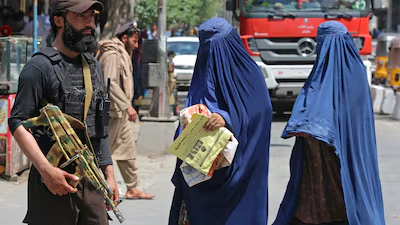speckledtroutrodeo.com – Afghanistan has been a focal point of international attention due to its prolonged conflict, which has significantly impacted its social and economic fabric. One of the lesser-discussed consequences of ongoing conflict is the rise in crime rates. This article explores the intricate relationship between conflict and crime in Afghanistan, highlighting the contributing factors and potential solutions.
Historical Context
The conflict in Afghanistan, spanning over four decades, has created a complex socio-political landscape. The continuous state of war has weakened government institutions, undermined law enforcement capabilities, and exacerbated poverty and unemployment, which are key drivers of crime. The breakdown of law and order has provided fertile ground for criminal activities to flourish.
Rise in Crime Rates
In recent years, there has been a noticeable increase in crime rates across Afghanistan, particularly in urban areas like Kabul. Reports indicate a spike in robberies, kidnappings, and drug trafficking, all of which are symptoms of a broader socio-economic collapse. The Taliban’s resurgence has further complicated the security situation, as they both combat crime in some areas and are implicated in criminal activities themselves.
Factors Contributing to Crime
- Economic Hardship: With the economy in shambles, many Afghans find themselves with limited legitimate opportunities to earn a living. This economic desperation often pushes individuals towards criminal activities as a means of survival.
- Weak Law Enforcement: The Afghan police force, already stretched thin by the demands of counter-insurgency operations, struggles to maintain public order and safety. Corruption within law enforcement agencies further diminishes their effectiveness.
- Drug Trade: Afghanistan remains the world’s largest producer of opium, and the narcotics trade is a major source of revenue for various criminal networks. The drug trade not only fuels addiction and related crimes but also finances insurgency groups.
- Displacement and Urbanization: The conflict has displaced millions, leading to rapid urbanization in cities ill-equipped to handle such influxes. This has resulted in the formation of informal settlements where crime is rampant due to lack of governance and basic services.
Impact on Society
The rise in crime has profound implications for Afghan society. It exacerbates insecurity, undermines trust in government and law enforcement, and hampers economic development. The pervasive fear of crime affects everyday life, limiting mobility and access to education and healthcare.
Potential Solutions
Addressing the crime surge in Afghanistan requires a multifaceted approach:
- Strengthening Institutions: Building robust, transparent, and accountable law enforcement and judicial systems is crucial. International support and training can enhance the capacity of Afghan police and judiciary.
- Economic Development: Creating jobs and economic opportunities can reduce the incentives for criminal behavior. Investment in infrastructure, education, and vocational training can help rebuild the economy from the ground up.
- Community Engagement: Programs that involve local communities in crime prevention and peace-building efforts can foster trust and cooperation between citizens and law enforcement.
- Counter-Narcotics Strategy: A comprehensive approach to tackle the drug trade, including eradication efforts and alternative livelihood programs for poppy farmers, is essential.
Conclusion
The impact of conflict on crime rates in Afghanistan is a testament to the broader socio-economic challenges facing the country. While the situation is dire, there is hope for progress through concerted efforts by the Afghan government, civil society, and the international community. Addressing these issues is not only vital for Afghanistan’s future stability but also for regional and global security.
